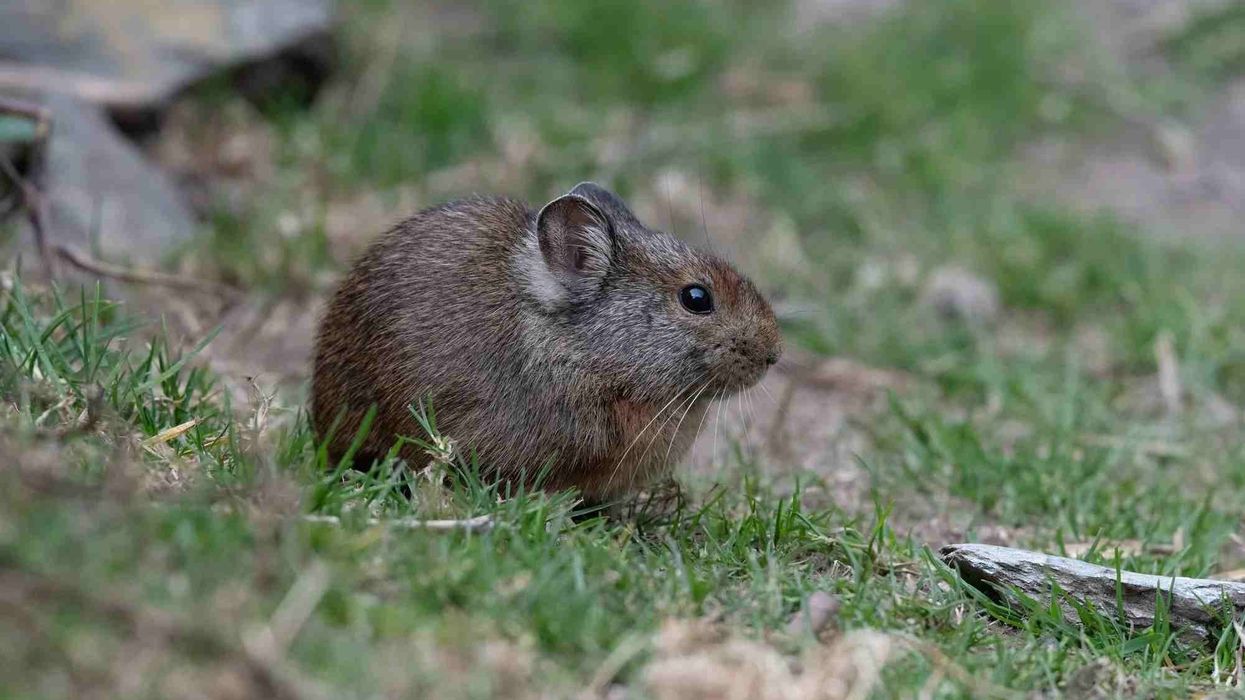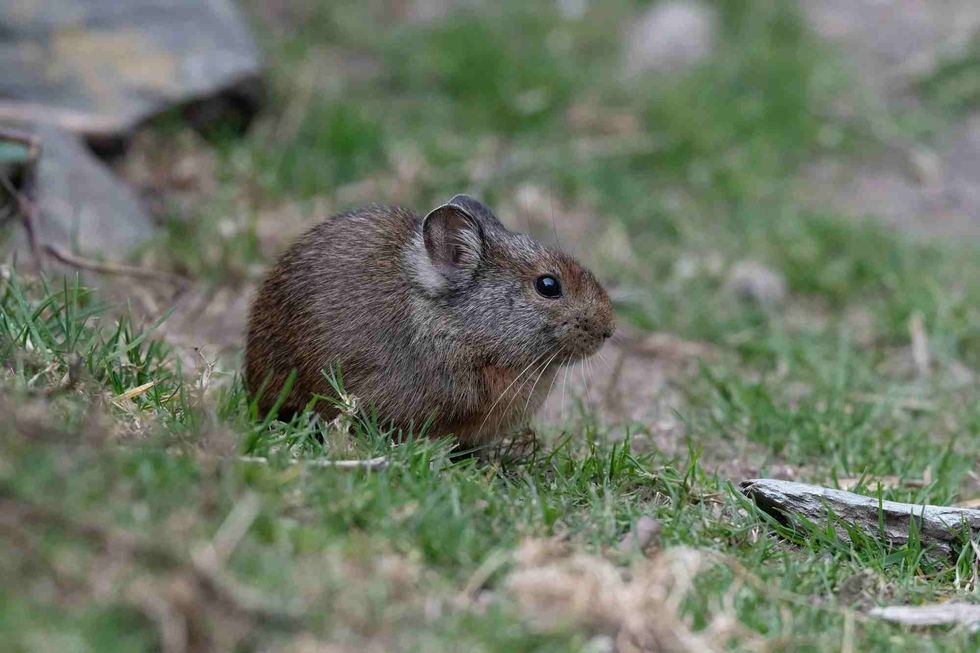The Himalayan pikas (Ochotona himalayana), are small mammals that are native to the Himalayan mountain range, and even though they are a species of least concern, they can be very difficult to locate as they occur in the harsh climate of the Himalayas.
Himalayan pikas are an adorable species thanks to their small size and short rounded ears which makes these creatures super cute to look at!
Going by the looks of these creatures, it is often assumed that they belong to the Rodentia order, but that is not the case as they belong to the Lagomorpha order which also consists of rabbits and hares.
Pikas are shy creatures and do not interact with humans unless they are nearby human settlements. With more than 30 species in the Ochotoan genus, the pika group is vast and their population keeps growing as a result of which they are not a species that is in dire need of saving.
If you liked these true facts about Himalayan pika, then you'll surely like these facts about gerbil and marsupial mole too!
Himalayan Pika Interesting Facts
What type of animal is a Himalayan pika?
The Himalayan pika (Ochotona himalayana) is a small species of mammal that belongs to the Ochotonidae family. These small animals are part of the order Lagomorpha which also contains many species of rabbits and hares.
The genus Ochotona is the only genus recognized in the pika family which consists of other pika species like the American pika (Ochotona princeps), Royle's pika (Ochotona roylei), Northern pika (Ochotona hyperborea), and the collared pika (Ochotona collaris) to name a few.
What class of animal does a Himalayan pika belong to?
These small rock-dwelling pikas belong to the class of mammals.
How many Himalayan pikas are there in the world?
Himalayan pika is hard to search for in its natural range as it is native to cold temperatures along the rocky mountains and cliffs in the Himalayan region, which makes it difficult to use references or research of these habitats to estimate the population count of these species.
Even though no population estimate can be given, it is safe to say that these pikas, like their close relatives, the Royle's pika (Ochotona roylei) and the American pika are a species of Least Concern meaning that their population is stable.
Where does a Himalayan pika live?
Himalayan pikas are native to the Himalayan mountains and are often confused with the Royle's pika (Ochotona roylei) that they are closely related to. These rock-dwelling pikas are mostly found in the northern part of the Himalayan mountains at high altitudes.
These species of pikas are also said to occur in the moderate temperatures of Nepal, this claim about these habitats is yet to be proved.
What is a Himalayan pika's habitat?
Himalayan pikas are always on the move in search of food and like the Royle's pika, which they are related to, forage for food during the monsoon season even though they do not hibernate during the cold and long winter seasons in their native habitats.
Himalayan pikas can often be found in dense vegetation among the cold mountain ranges or they can be found in rocky places, cliff edges with rocks, and sometimes in burrows, as they are also a burrowing species.
These burrowing and rock-dwelling pikas are also found amongst human habitation as they make use of existing burrows, filling them with grass and hay from the nearby vegetation to create comfortable burrows to spend the winter season in. Rocky areas also provide these species to avoid predators in their natural habitat.
Who do Himalayan pikas live with?
Himalayan pikas are social creatures and are often found in a small group that is made up of parents and their litters. While during the breeding season, a Himalayan pika male and a female will pair up. When these creatures forage the dense vegetation for food sources, they often pair up with burrow mates and share the food.
How long does a Himalayan pika live?
Himalayan pikas, much like other members of the pika family, like the collared pika and American pika that they are related to, have a lifespan of seven years in the wild.
How do they reproduce?
There is not much information about these creatures during the breeding season. It is, however, known that these creatures related to rabbits and hares who also belong to the order Lagomorpha, have small litters which consist of four to five young which are born after a gestation period of 25-30 days.
These rock-dwelling species take advantage of the favorable habitat and availability of food sources and often breed more than once during the breeding season, which results in a small group of young pikas.
What is their conservation status?
Himalayan pikas have been listed as a species of Least Concern on the IUCN Red List as these burrowing mammals thrive in their natural habitat thanks to excess food sources and enough hiding places like piles of rocks and cliffs to avoid predators.
Himalayan Pika Fun Facts
What do Himalayan pikas look like?
Himalayan pikas much like rabbits and hares have a body that is covered in dense fur that helps them survive in the harsh climate conditions of the Himalayan mountain ranges. These species have grayish-brown fur, which can be a rusty red tone in some species.
Pikas are well recognized for their short rounded ears and round body. The lack of tails on their body makes it easier to differentiate pikas from other burrowing mammals like hares and rabbits.
 *We've been unable to source an image of Himalayan pika and have used an image of a pika instead. If you are able to provide us with a royalty-free image of Himalayan pika, we would be happy to credit you. Please contact us at hello@kidadl.com.
*We've been unable to source an image of Himalayan pika and have used an image of a pika instead. If you are able to provide us with a royalty-free image of Himalayan pika, we would be happy to credit you. Please contact us at hello@kidadl.com.
How cute are they?
These burrowing mammals are some of the most adorable creatures in existence! The rounded ears and a short stocky body gives pikas a cute and adorable look that is tough to ignore! If you were to compare pikas to rabbits on the cuteness scale, the burrowing pikas will absolutely win.
How do they communicate?
Pikas communicate with each other through calls. A couple of calls can be heard from the rock-dwelling group of pikas. The calls of the burrowing pikas are different that the calls of the pikas who live amongst rocks. These calls are often used to communicate with the young.
How big is a Himalayan pika?
Himalayan pikas are small-sized and a full-grown adult weighs between 6.6-8.6 in (16.7-21.8 cm). In comparison, these pikas are twice the size of the Pygmy possum, which is recognized as one of the smallest species of mammals that grows between 2-4 in (5-10.1 cm).
How fast can a Himalayan pika move?
The movement speed of the Himalayan pika is currently unknown, however, if we were to take into consideration the movement speed of different species of pikas, it can be stated that the Himalayan pikas have a movement speed of 15 mph (24.1 kph). Not to forget, this is just an assumption and the real movement speed might differ.
How much does a Himalayan pika weigh?
The weight of these pikas cannot be stated due to a lack of data.
What are the male and female names of the species?
Just like in the case of rabbits, the Himalayan pika female is called a doe and the male is called a buck.
What would you call a baby Himalayan pika?
Himalayan baby pikas have no name assigned to them and are just called young or baby pikas.
What do they eat?
Since these mammals are herbivorous in nature, the Himalayan pika diet consists of a variety of plants. In the wild, the Himalayan pika eats grasses, liches, moss, and twigs.
Are they dangerous?
No, this adorable species is not dangerous at all. Pikas are docile creatures that may interact with humans if they are near human settlements. These species may act hostile towards other pikas, especially males, during the breeding season when they become territorial.
Would they make a good pet?
No, these creatures will not make good pets as they are wild in nature. Even if you were to get your hands on a Himalayan pika, it would be tough to cater to them as they have a high specific habitat range and will not be able to survive in captivity due to this.
Did you know...
Himalayan pikas might look like members of the Rodent family but they are not!
Pikas are rare in their region as they do not come out of their burrows easily and will leave the comfort of their home only when they have to forage food.
Pikas can be used to study climate change in their habitats as the creatures are susceptible to changes in temperatures and will move to a new location if the climate around them gets too hot.
When entering their burrows, pikas make a whistling sound to let others know of their return.
Pikas are kleptoparasitic as they steal food from one another.
Are Himalayan pikas endangered?
No, Himalayan pikas are a species of Least Concern and are in no need of protection or conservation efforts as they are thriving in their natural range of habitats that provide them protection from predators like weasels.
Why is the Himalayan pika important?
Pikas are an important part of the Himalayan ecosystem as they are part of the food chain for larger carnivores. Pikas also play an important role as cleaners as they often feed on the various poisonous plants that can be lethal to other creatures.
In a way, Himalayan pikas can be considered as the guardian angels of other creatures in the Himalayan mountain range.
Here at Kidadl, we have carefully created lots of interesting family-friendly animal facts for everyone to discover! For more relatable content, check out these gopher facts and eastern harvest mouse facts for kids.
You can even occupy yourself at home by coloring in one of our free printable long-eared jerboa coloring pages.




 *We've been unable to source an image of Himalayan pika and have used an image of a pika instead. If you are able to provide us with a royalty-free image of Himalayan pika, we would be happy to credit you. Please contact us at hello@kidadl.com.
*We've been unable to source an image of Himalayan pika and have used an image of a pika instead. If you are able to provide us with a royalty-free image of Himalayan pika, we would be happy to credit you. Please contact us at hello@kidadl.com.




